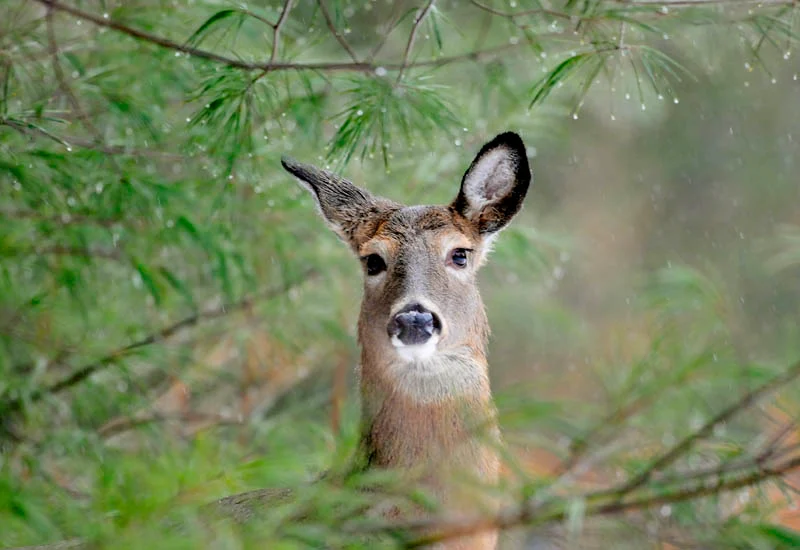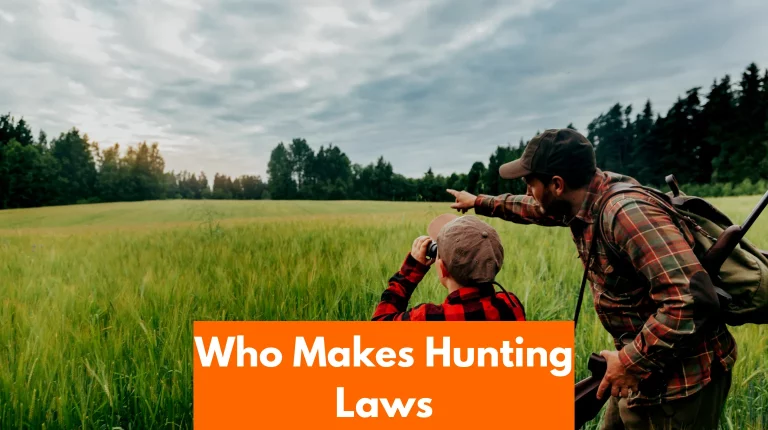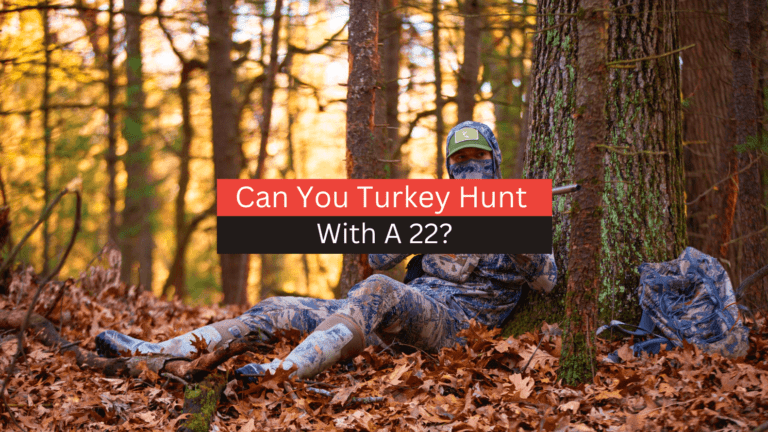Are you wondering if deer move in the rain? Well, the answer might surprise you! Contrary to popular belief, deer are actually quite active during rainy weather, and in fact, they may be more active than usual.
So, if you are a hunting enthusiast or simply enjoy observing wildlife, don’t let the rain discourage you from venturing out. Keep reading to find out more about how deer behave in wet weather.
Do Deer Move in the Rain?
Deer are creatures of habit and have adapted to various environmental conditions, including different types of precipitation. While deer may not be as active during rainstorms as they are on clear, dry days, they still move and can be hunted in the rain.
We will explore how deer move in different types of rain and how to effectively hunt them in those conditions.
1. Light to Moderate Rain
Deer are more likely to move during light to moderate rain than during heavy rain or storms. The sound of rain hitting the forest floor can cover a hunter’s footsteps, allowing them to move more quietly.
The rain also dampens the leaves and twigs, making it easier for deer to move around without making as much noise. Additionally, light rain can create a sense of urgency in deer to move and feed before the rain becomes heavier.
2. Heavy Rain or a Storm
During heavy rain or storms, deer are less likely to move around as much. They will often bed down and wait for the rain to subside. However, once the storm has passed, deer may move around to feed and drink.
Hunters should be aware that after a heavy rain or storm, the forest floor will be very wet and noisy, making it difficult to move around quietly. Additionally, lightning and thunder may spook deer and cause them to run.
3. After it Storms
After a rainstorm, deer are more likely to move around than during the storm itself. The wet ground and cooler temperatures can make it easier for them to move around and forage. Additionally, the rain may have washed away some of their scents, making it more difficult for predators to track them.
Hunters should take advantage of this time and look for deer trails and bedding areas.
4. Wind Speed
Wind can be a significant factor in how deer move in the rain. During a light rain, a gentle breeze may not have much of an impact on deer behavior. However, during heavy rain or storms, strong winds can spook deer and cause them to bed down. Hunters should be aware of the wind speed and direction and plan their approach accordingly.
5. Hunting in the Rain
Hunting in the rain can be challenging, but also rewarding. As mentioned earlier, rain can cover a hunter’s footsteps and make it easier to move around undetected. However, the wet ground can be very noisy, so hunters should move slowly and carefully. Additionally, hunters should be aware of their visibility and wear appropriate rain gear to stay dry and comfortable.
6. Hunting at Bedtime
Deer are more likely to move around during the early morning and late evening hours, also known as their bedding and feeding times. These times may be slightly altered during rain, but they still offer the best chances of spotting and hunting deer. Hunters should be prepared to sit for long periods in a tree stand or blind, waiting for deer to move into range.

Conclusion
In conclusion, deer are known to move in the rain. While they may be more hesitant to move around in heavy downpours, they are still active during light rain and drizzles.
In fact, deer are adapted to wet environments and can use the rain to their advantage when foraging for food or seeking shelter. However, it’s important to note that hunting or tracking deer in the rain can be more difficult due to the sound of raindrops masking approaching predators.
Therefore, hunters and wildlife enthusiasts should take extra precautions and remain patient when observing deer in rainy weather.
FAQs
What time of day do deer move most?
Deer are known to be crepuscular animals, meaning they are most active during the periods of dawn and dusk. During these times, they are more likely to move around and search for food or mates. Additionally, there may be less human activity during these hours, making it easier for them to move around undisturbed.
That being said, deer can also be active at other times of the day, particularly during the rutting season (mating season), when males are more likely to be on the move in search of mates. They may also be active overnight, particularly in areas with low human activity or during periods of bright moonlight.
If you are planning to observe or hunt deer, it’s important to consider the time of day and plan accordingly. Generally, you’ll have the best chances of spotting or encountering deer during the early morning or late afternoon. However, it is always a good idea to do some research on the specific area you’ll be visiting and pay attention to any signs of deer activity you may come across.
Can deer smell you in the rain?
Yes, deer can still smell you in the rain, but the scent may be slightly diluted and dispersed due to the damp conditions. While rain may help to wash away some human scent, it can also create an environment that enhances a deer’s sense of smell. The moisture in the air can help to carry scents further, making it easier for deer to detect even small amounts of human odor.
Additionally, deer have a highly developed sense of smell that allows them to detect scents even at great distances. They rely heavily on their sense of smell to detect danger and locate food sources, making it difficult to completely mask your scent in any weather condition.
Therefore, it is important to practice proper scent control techniques when hunting or observing deer in the rain, such as wearing scent-blocking clothing, using scent-neutralizing sprays, and being mindful of wind direction. These measures can help to reduce the chances of deer detecting your presence, even in damp conditions.
Do axis deer move in the rain?
It is possible for axis deer to move in the rain, as they are adaptable to various weather conditions. However, their movement patterns may be affected by the intensity of the rain and the availability of food and shelter.
Does whitetail deer move in the rain?
Yes, they do. Although they may move slower and be more cautious, whitetail deer are still active and will move around during rain. In fact, some hunters consider rain to be a good time to hunt as it can sometimes mask the sound of their movements. However, it is important to note that heavy downpours may cause deer to bed down until it passes.
Do mule deer move in the rain?
Mule Deer may bed down during a downpour, but the best time to take advantage of movement is often right after the rain lightens to a drizzle or stops completely.
How Do Deer Survive in Severe Weather Conditions?
During severe weather, deer have ways to adapt to their environment. They have thick coats of fur to keep them warm, and they can also change their metabolism to conserve energy.
They eat more during the late summer and fall to build up fat reserves, allowing them to survive on less food in the winter.
Deer also huddle together for warmth and use natural windbreaks to protect themselves from harsh winds. Also, when it’s very cold, they can slow down their heart rate and lower their blood pressure to save energy.

I am Sam Billings, an entrepreneur who runs a printing business. In my free time, I enjoy the thrill of the hunt and often spend hours pursuing game. I am passionate about hunting gear and equipment, and I take great pleasure in helping fellow hunters find the right gear for their needs. From rifles and scopes to clothing and accessories, I am always happy to share my knowledge and expertise.






